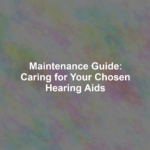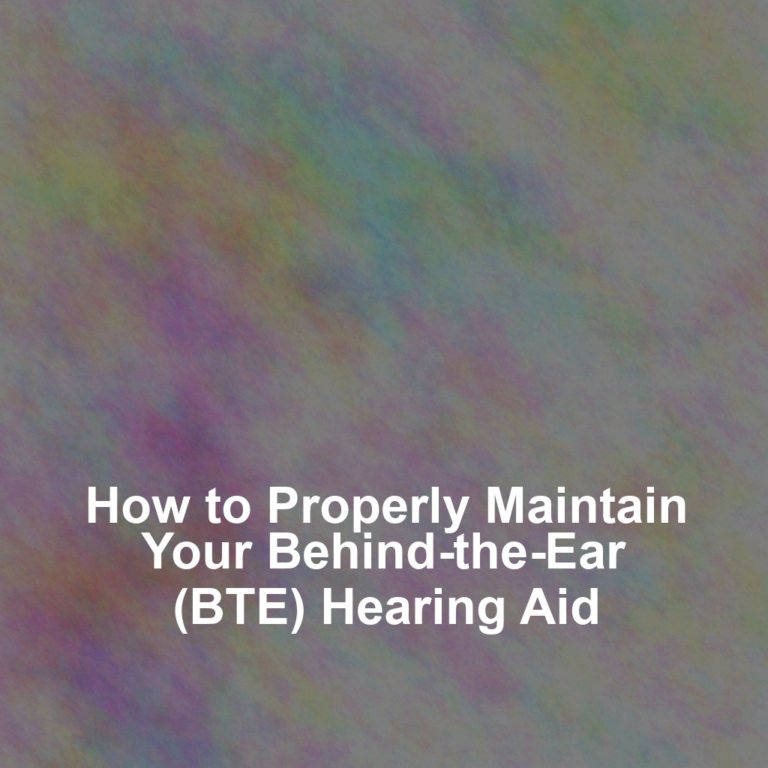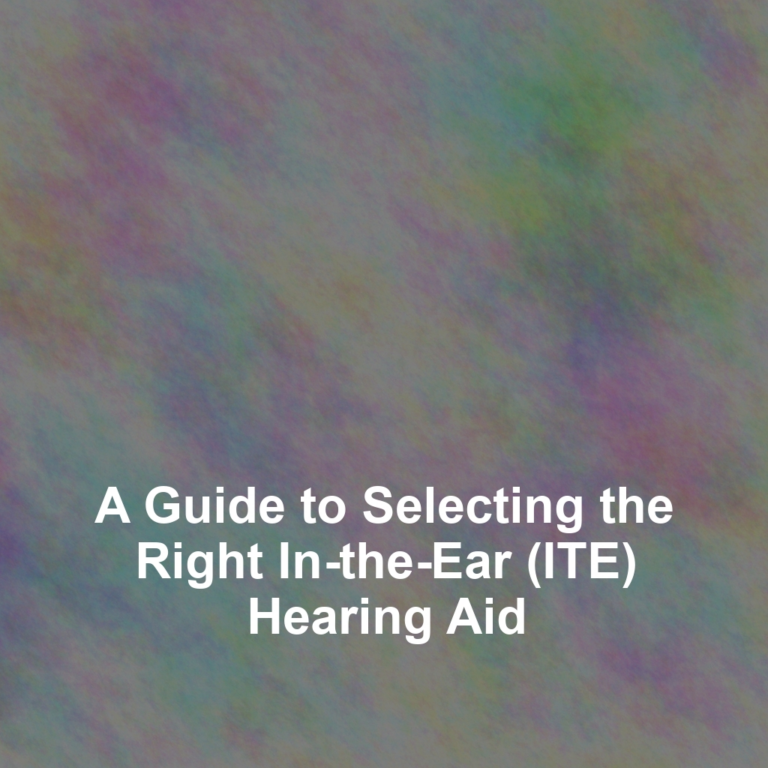You might believe your in-the-ear hearing aids are self-cleaning, like some mythical creature that needs no upkeep, but letG??s face it, thatG??s as far from the truth as your ability to hear a pin drop in a busy street without them.
YouG??ve invested in these tiny technological marvels to improve your quality of life, and now itG??s crucial to maintain them properly. Daily cleaning procedures arenG??t just a suggestion; theyG??re a cornerstone of ensuring your hearing aids function optimally and last as long as theyG??re meant to.
As you learn about moisture control techniques and safe handling practices, youG??ll discover that a little care goes a long way in preventing annoying sound issues and extending the life of your device.
And when it comes to batteries, youG??ll want to know the ins and outs of care and replacement to keep the sounds of the world at your fingertips.
Think of this as your guide to becoming a hearing aid maintenance ninja, poised to protect your auditory investment with stealth and precision.
Daily Cleaning Procedures
Every day, you should gently wipe your in-the-ear hearing aids with a dry, soft cloth to remove earwax and debris. This simple step prevents buildup that can affect performance. Remember, moisture is the enemy of your hearing aids, so make sure the cloth isnG??t damp.
Next, check the microphone ports. YouG??ll find them on the outer part of the device. Use a soft-bristled brush designed specifically for hearing aids to clear away any particles. Be careful not to insert the brush into the ports, as you might damage the microphone.
Inspect the wax filter. If itG??s clogged, your hearing aids wonG??t work properly. Most models come with a tool to change the filter. Use it regularly to ensure sound can pass through unobstructed.
Lastly, open the battery compartment and brush away any grime. At night, leave the compartment open to air out. This extends the life of the batteries and the hearing aid itself.
Moisture Control Techniques
After ensuring your hearing aids are clean and free from debris, itG??s crucial to focus on keeping them dry, as moisture can severely impact their functionality. Even a small amount of moisture can cause distortion, reduce battery life, or even lead to complete failure of your ITE hearing aids.
Here are some effective moisture control techniques you should consider:
-
Use a Dehumidifier: Invest in a hearing aid dehumidifier or drying container. Place your hearing aids inside overnight to remove any accumulated moisture.
-
Avoid Extreme Temperatures: DonG??t leave your hearing aids in environments with high humidity or extreme cold, as these conditions can condense moisture within the devices.
-
Dry Wipes: Always have soft, absorbent, non-abrasive wipes handy to gently dab away any moisture on the surface after daily use.
-
Protective Covers: Consider using sweat-resistant covers when youG??re participating in physical activities or are outside on humid days.
-
Air Out: When youG??re not using your hearing aids, open the battery compartment. This allows air to circulate and helps any trapped moisture to evaporate.
Safe Handling Practices
To maintain your in-the-ear hearing aids in optimal condition, itG??s essential to handle them with care each time you insert or remove them from your ears. Start by washing your hands to prevent transferring dirt or oils. Make sure your fingers are dry to avoid slipping, which could cause you to drop the devices.
When taking your hearing aids out, do it over a soft surface or while seated to minimize the distance theyG??d fall if you accidentally drop them. Always pick them up by the body G?? not by the tube, wire, or receiver G?? to avoid damage.
As you handle your ITE hearing aids, be gentle and avoid exposing them to extreme temperatures or direct sunlight, which can degrade the materials and electronics. DonG??t apply any unnecessary force; if something seems stuck or isnG??t fitting right, donG??t force it. Instead, check for any obstructions or earwax buildup that might be causing the issue.
Lastly, when youG??re not wearing them, store your hearing aids in a dedicated case away from pets and children. This protective measure not only safeguards them from physical damage but also keeps them free from dust and moisture when not in use.
Troubleshooting Sound Issues
If youG??re experiencing poor sound quality or no sound at all from your in-the-ear hearing aids, first check the volume settings and battery status to ensure theyG??re functioning properly. Sometimes, the fix is as simple as adjusting the volume or replacing a depleted battery.
When these initial checks donG??t solve the problem, consider the following steps:
-
Inspect the microphone and sound outlet: Look for any debris or wax buildup that might be blocking the sound. A small brush can be used to gently clean these areas.
-
Change the wax guard: If your hearing aid has a replaceable wax guard, install a new one as wax accumulation can significantly reduce sound quality.
-
Ensure proper fit: A poorly fitted hearing aid can lead to feedback or reduced sound quality. Make sure itG??s seated correctly in your ear.
-
Check for moisture: Moisture can damage your hearing aids. If theyG??ve been exposed to water, dry them with a dehumidifier or a drying kit.
-
Consult the manual or your audiologist: If youG??ve tried these steps and the issue persists, refer to your deviceG??s manual or reach out to your audiologist for professional advice and possible repair.
Battery Care and Replacement
Ensuring your hearing aid batteries are properly maintained can significantly extend their life and performance. Remember, theyG??re the powerhouse of your ITE hearing aids, and treating them with care is essential.
First off, always handle batteries with clean, dry hands to prevent corrosion or damage. When youG??re not using your hearing aids, turn them off and open the battery compartment. This minimizes battery drain and allows any moisture to evaporate.
YouG??ll need to replace your batteries regularly, so keep a fresh supply on hand. Watch for the signs that itG??s time for a new battery: distorted sound, less power, or a beeping noise from your hearing aid. When itG??s time to change them, make sure the new batteries are the correct size and type for your device. It might be tempting to stock up, but donG??t buy more than a 6-month supply, as batteries can lose their charge over time.
Dispose of used batteries properlyG??donG??t toss them in the trash. Many places offer recycling programs specifically for batteries. By following these simple steps, youG??ll ensure your hearing aids are powered up and ready to help you hear clearly every day.
Conclusion
Remember, keeping your in-the-ear hearing aids in top shape is a breeze with a little daily care.
Wipe them clean, keep them dry, and handle them gently.
If theyG??re acting up, check for wax or battery issues before you panic.
And when itG??s time, swap out those batteries promptly.
By following these simple steps, youG??ll ensure your hearing aids perform their best, and youG??ll stay connected to all the sounds of your life.











